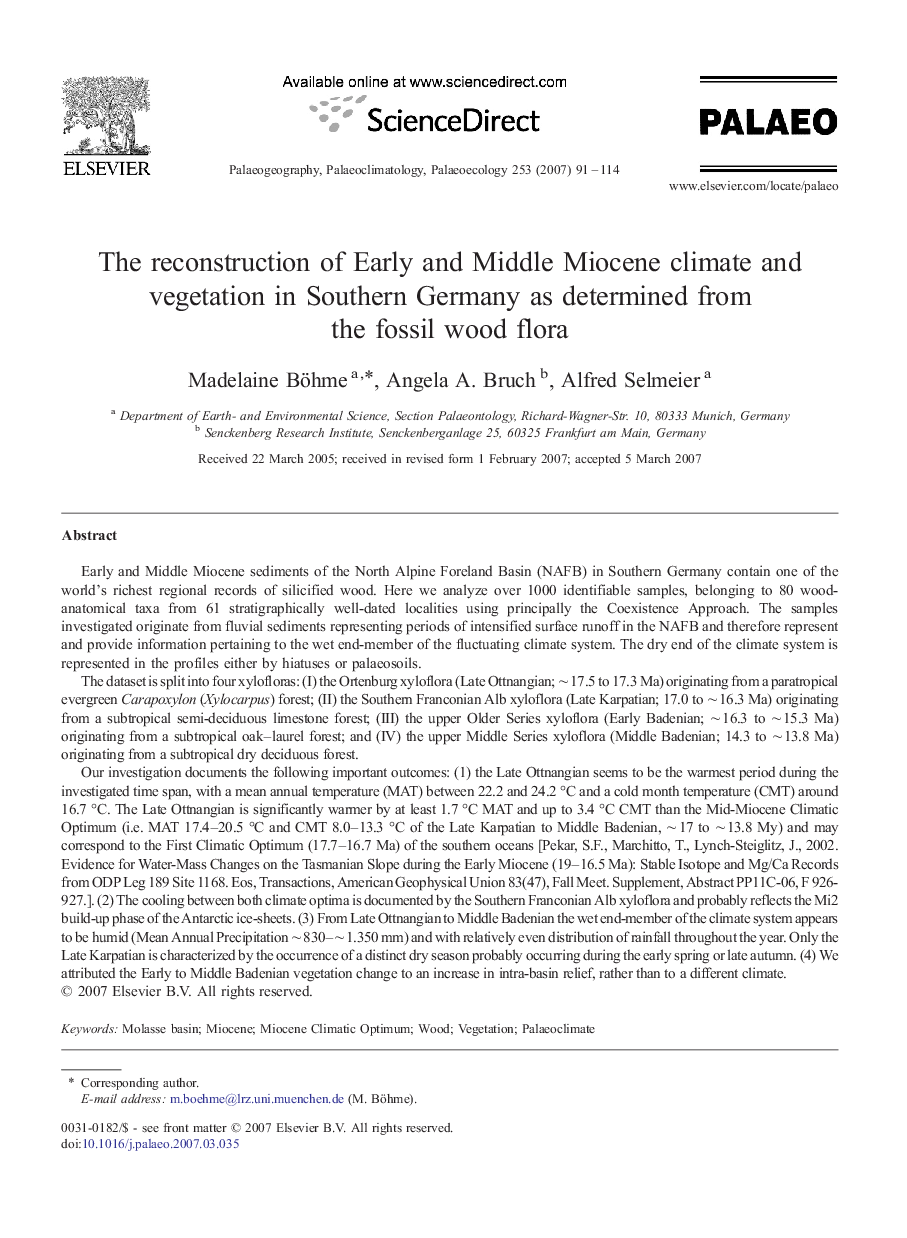| Article ID | Journal | Published Year | Pages | File Type |
|---|---|---|---|---|
| 6350745 | Palaeogeography, Palaeoclimatology, Palaeoecology | 2007 | 24 Pages |
Abstract
Our investigation documents the following important outcomes: (1) the Late Ottnangian seems to be the warmest period during the investigated time span, with a mean annual temperature (MAT) between 22.2 and 24.2 °C and a cold month temperature (CMT) around 16.7 °C. The Late Ottnangian is significantly warmer by at least 1.7 °C MAT and up to 3.4 °C CMT than the Mid-Miocene Climatic Optimum (i.e. MAT 17.4-20.5 °C and CMT 8.0-13.3 °C of the Late Karpatian to Middle Badenian, â¼Â 17 to â¼Â 13.8 My) and may correspond to the First Climatic Optimum (17.7-16.7 Ma) of the southern oceans [Pekar, S.F., Marchitto, T., Lynch-Steiglitz, J., 2002. Evidence for Water-Mass Changes on the Tasmanian Slope during the Early Miocene (19-16.5 Ma): Stable Isotope and Mg/Ca Records from ODP Leg 189 Site 1168. Eos, Transactions, American Geophysical Union 83(47), Fall Meet. Supplement, Abstract PP11C-06, F 926-927.]. (2) The cooling between both climate optima is documented by the Southern Franconian Alb xyloflora and probably reflects the Mi2 build-up phase of the Antarctic ice-sheets. (3) From Late Ottnangian to Middle Badenian the wet end-member of the climate system appears to be humid (Mean Annual Precipitation â¼Â 830-â¼Â 1.350 mm) and with relatively even distribution of rainfall throughout the year. Only the Late Karpatian is characterized by the occurrence of a distinct dry season probably occurring during the early spring or late autumn. (4) We attributed the Early to Middle Badenian vegetation change to an increase in intra-basin relief, rather than to a different climate.
Related Topics
Physical Sciences and Engineering
Earth and Planetary Sciences
Earth-Surface Processes
Authors
Madelaine Böhme, Angela A. Bruch, Alfred Selmeier,
